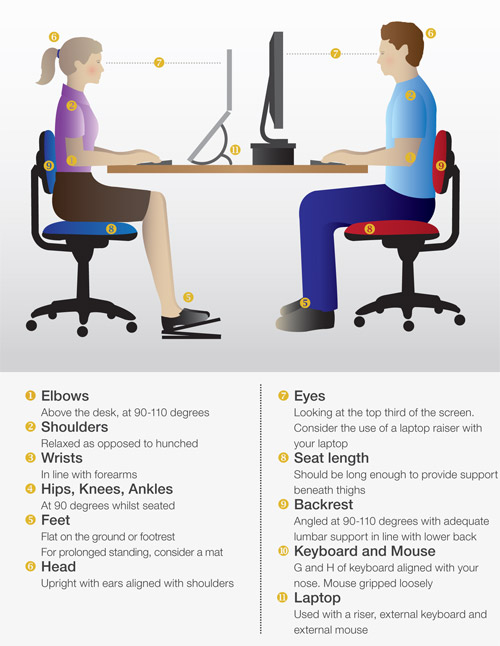The next time you take the train, observe how many commuters use their mobile devices with their head and back hunched forward. Why do such poor posture habits matter?
Analogy of the Bowling Ball
Your head weighs as much as a 12lbs (5.4kg) bowling ball. In a neutral sitting or standing posture, your spine already bears that weight. For every 1 inch (2.5cm) your head goes forward, your spine is stressed an additional 10lbs (4.5kg), an additional bowling ball’s weight (Kapandji, 2008). So if the head is 3 inches forward, your spine bears 42lbs (19kg), which is a lot! Also, your muscles on the back get tight while those on the front get weak, pulling the spine into potential misalignment(s) and creating structural imbalance. Thus, it is not surprising that aches and pains, from neck to low back, are often related to poor posture.

Impact on Athletic Potential
Prolonged forward head posture may decrease up to 30% of lung vital capacity (Calliet, 1991). As an athlete, I am looking for every 0.01% from all bodily aspects to get me faster, higher, and stronger. Therefore, it makes sense to sit straight.
Impact on the Nervous System
Spinal misalignments (also referred to as “vertebral subluxations”) occur due to any kind of stress the body cannot adapt to (e.g. poor posture). These have a far reaching impact not just on the musculoskeletal system, but also the nervous system. Poor posture creates tension along the nerve signal pathways between the brain, spinal cord, and nerves. Since the nervous system coordinates all aspects of the body (from systems to organs to cells), it makes sense to reduce unnecessary spinal tension, so that athletes can function at optimum potential.
Posture Correction

Firstly, individuals have to be aware about what good posture entails, which requires regular self-checks until it becomes a habit. Secondly, there could be underlying skeletal imbalances that limit the individual’s ability to sit or stand neutrally. This is where Doctors of Chiropractic come in. We are uniquely trained to correct “vertebral subluxations” via gentle and specific adjustments.

Parting Experiment
Try hunching down with poor posture for 30s versus sitting neutrally with the head upright. Chances are you feel more “stressed” in the former situation due to a low level “fight or flight” response. I rather save my fighting or flying for marathon race day, simply by “keeping my head up”. How about you?


